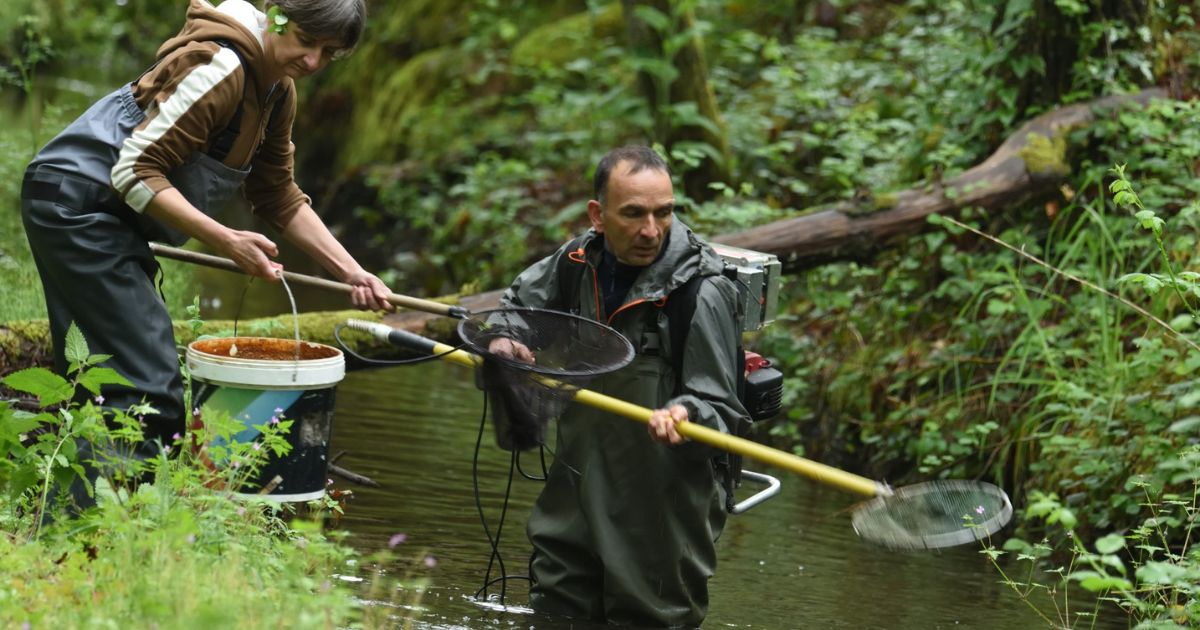MARE takes part in the first Lafões Bioblitz
Between May 2 and 4, as part of the 1st Environment Days, around half a hundred people gathered in São Pedro do Sul to survey the local biodiversity. This citizen science action included several renowned experts, including MARE researchers Filipe Ribeiro, Paula Chainho, Verónica Ferreira, Ana Veríssimo and Sónia Serra. 
The first edition of the São Pedro do Sul Bioblitz took place in three areas of great ecological value in the municipality: the Lenteiro do Rio Park, the Ribeira da Vagem and the Trouce River, with an entrance from Quinta da Comenda. During the event, field trips were made to observe and identify various groups of local fauna and flora, such as plants, insects, aquatic invertebrates, fish, reptiles, birds and mammals.
The event included sessions led by MARE researchers Verónica Ferreira and Sónia Seixas, who identified aquatic macroinvertebrates as bioindicators of good ecological quality. In addition, representing MARE, researchers Filipe Ribeiro, Paula Chainho and Ana Veríssimo conducted electrofishing sessions in the Ribeira da Vagem and Rio Trouce, where three native species were identified: ruivaco (Achondrostoma oligolepis), a species endemic to Portugal; escalo-do-norte (Squalius carolitertii), endemic to the Iberian Peninsula; and river trout (Salmo trutta). The capture of specimens of various ages and sizes revealed the good ecological preservation of the water lines and the existence of healthy and sustainable fish populations.
According to Paula Chainho, “This Bioblitz was much more than a species survey - it was a meeting between scientists and researchers, curious people, shared knowledge and a deep connection to nature. It showed us that, even in the rain, there is a community willing to care for, learn about and celebrate the biodiversity of Lafões.”
Botanist João Farminhão (University of Coimbra) highlighted the discovery of a new nucleus of the rare Doronicum plantagineum species. In the area of entomology, Grosso-Silva identified the protected butterfly Euphydryas aurinia and the Carabus galicianus beetle, which was previously unknown in the region. Biologist Davina Falcão debunked myths about snakes, while Nuno Campos, responsible for the “Cuida - Fauna e Flora de Lafões” inventory, identified 44 species of birds, mainly by vocalization.
One of the highlights was the return to the wild of a round-winged eagle, recovered after being hit by a car, led by Ricardo Brandão. In addition to direct observations, photo-trapping and footprint analysis, under the guidance of Dário Hipólito (CESAM), made it possible to record more discreet mammals. All the records were added to the iNaturalist platform, a citizen-science tool that allows anyone to share species observations, promoting knowledge and the global conservation of biodiversity.
The great response to the event suggests that the initiative should continue, highlighting the importance of biodiversity conservation.
Written by Patrícia Carvalho
